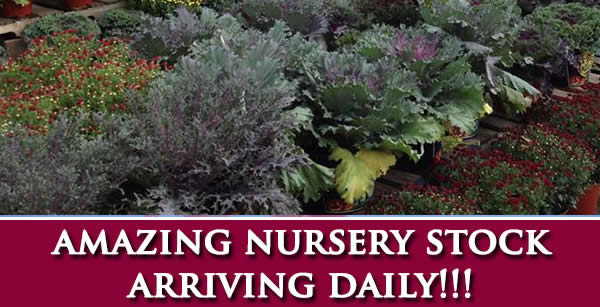
As summer winds down and autumn starts to make way for winter, September brings us cooler temperatures, colorful scenery, and the end to another season of gardening.
We still should have a few weeks to go before we have to worry about freezing temperatures, but it's a good idea to keep an eye on the forecast. If a frost is predicted, you'll want to get anything left to harvest out of the garden beforehand or you'll run the chance of it being ruined.
September is a great month to start shopping for bulbs. Tulips and daffodils tend to be everyone's standards, but mixing in some crocus, pushkinia, fritillaries, or lilies will extend the time that your beds will be showing off their vibrant colors. If you're not sure where to start or are looking for something new, our staff would be glad to help you choose some great varieties to plant this year.
This is also a great time to divide and transplant spring and summer-flowering perennials. After a few years, perennials will be sprawling and overgrown and dying off in the middle.
Trim them back and divide them, leaving enough of a root ball on each section to allow each plant to grow on its own. When transplanting, space them out enough for them to grow back to full size without crowding each other too much.
As the leaves begin to fall, you might be tempted to rake all of the leaves up and bag them for the curb. It's a good idea to leave some in your beds and your garden though, as they will create a protective layer, keeping the soil slightly warmer and will break down, providing nutrients for future seasons.
If you have space, leaves can be a great starter for a compost pile, too. If you'd rather mow the leaves instead of raking, make sure to do a few passes to break them up well. A thick layer of leaves will starve your lawn of oxygen and light, which can kill the grass if left long enough.
You'll want to keep mowing regularly until your lawn goes dormant for the winter. Fall is the best time to fertilize your lawn, especially if you only do it once a year. If you overseed early in September, you should still have time to overseed any bare spots and get the grass established before the frost sets in. This is also the best time to attack any perennial weeds. Any left around now will come back in the spring.
In your vegetable garden, planting season is over, besides garlic, of course. Garlic will grow roots underground through the winter, put off vegetation in the spring, and will be ready for harvest early in the summer.
Break up a head of garlic and plant the cloves with the pointy end up. Just remember to mark where you planted it, so you won't disturb it when you're preparing your beds in the spring. As the plants in your vegetable garden begin to die off with the cooler temperatures, it's a good idea to just chop them at ground level and drop them where they are. They'll break down a bit over winter and provide a good mulch next season.
Click to print this article.


















